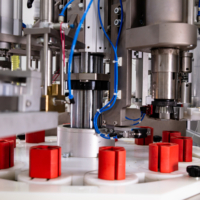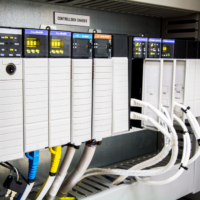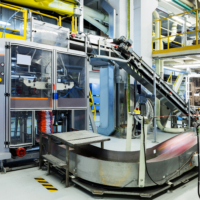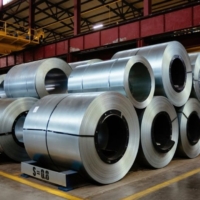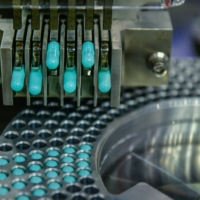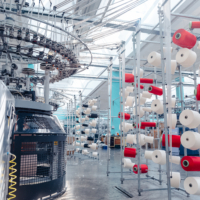What is a PLC System?
In this article:
- About PLC Systems
- What is the main purpose of a PLC?
- Where is a PLC used?
- How does a PLC work?
- How is a PLC different from a PC?
- What are the advantages of a PLC?
- Sources
About PLC Systems
In simple terms, a PLC (programmable logic controller) system is an industrial rugged computer. It was first developed for the automobile manufacturing industry to replace complex hard-wired relay logic systems with a more flexible and reliable electronic solution. The first PLC system was called the Modicon 084 and it was invented at Bedford Associates by Dick Morley in 1968. [1]
Nowadays, PLC systems vary in size and capacity to suit different industrial needs, from small-scale applications to large-scale operations.
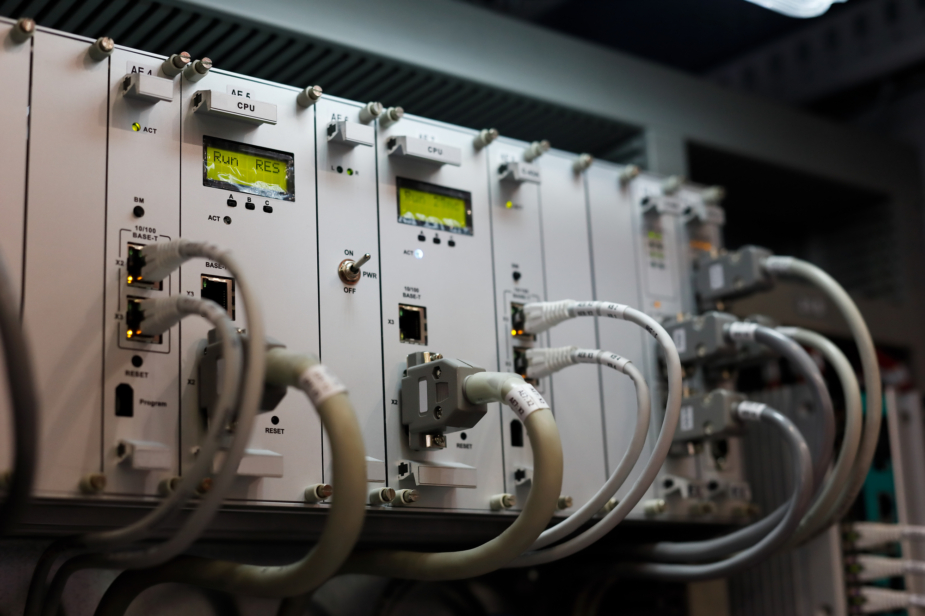
What is the main purpose of a PLC?
The main purpose of a PLC system is to automate and control manufacturing processes such as assembly lines, conveyor belts, robotic devices and so on. [2]
Other main purposes include receiving input signals from sensors and other devices, processing the information and executing specific commands to control the output devices. As a result, PLCs can effectively manage various tasks such as regulating temperature, pressure, flow, and motion in manufacturing and processing facilities. Additionally, PLCs can perform logical operations, timing functions, data manipulation and communication with other control systems.
Another key purpose of a PLC is to provide flexibility in programming and reprogramming control logic to meet the changing requirements of the production environment. This adaptability allows industries to easily modify and update their control systems without the need for extensive rewiring or hardware changes.
Where is a PLC used?
PLC systems are used in a wide range of industries and applications. The most common use of PLCs is in manufacturing and processing facilities. PLCs are also commonly used in the automotive industry to control the assembly of vehicles.
Other uses include the following:
- Food & Beverage – regulate the production and packaging of goods
- Pharmaceutical – regulate the production of medicines and ensure compliance with strict regulatory standards
- Transportation – control traffic lights, railway signalling systems and automated guided vehicles (AGVs) in logistics and warehousing operations
- Oil & Gas – monitor and control drilling operations, refinery processes, and pipeline transportation
- Utility & Energy – used to monitor and control power distribution, water treatment, and HVAC systems
How does a PLC work?
A typical PLC system consists of; input devices such as sensors and switches, output devices such as motors and valves, a central processing unit (CPU), a memory unit, a human-machine interface, a programming device and I/O (input and output) modules. [3]
The basic function of a PLC is to monitor the status of input devices and to control the status of output devices based on a pre-programmed set of instructions. When a PLC is powered on, it begins to scan its inputs and execute the logic programmed into its memory. This logic is typically created using ladder logic, a graphical programming language that represents circuits and relay logic in a way that is easy for technicians and engineers to understand. The PLC continuously monitors the state of its input devices and updates its internal memory to reflect the current status of these devices. It then uses this information to execute the appropriate control functions, such as turning on a motor, opening a valve, or activating an alarm.
PLCs can also perform more complex tasks such as data logging, communication with other devices, and implementing safety interlocks to protect personnel and equipment.
How is a PLC different from a PC?
PLCs are often misunderstood as a PC. While both PLC and PC (personal computer) are classified as computing devices, they have a few differences.
Firstly, they operate in different ways. PLCs typically run a real-time operating system (RTOS) that is optimised for deterministic control of physical processes. This means that a PLC can execute instructions with precise timing, ensuring that connected equipment operates in sync and responds to inputs in a consistent and reliable manner. On the other hand, a PC usually runs a general-purpose operating system, such as Microsoft Windows, macOS or Android, which is not designed for real-time control and may experience delays in executing tasks.
The second key difference is the hardware components and connectivity options. PLCs are equipped with specialised input/output modules that allow them to interface directly with sensors, actuators, motors and other industrial devices. They also have built-in communication ports for connecting to field devices and higher-level control systems. In contrast, PCs rely on external peripherals, such as USB interfaces and network adapters, to connect to external devices. Additionally, PLCs often have redundant power supplies and support for hot-swappable modules to ensure continuous operation in critical applications.
What are the advantages of a PLC?
PLCs offer numerous advantages including:
- Flexibility – PLC systems are highly flexible and can be easily reprogrammed for different processes or operations
- Reliability – known for their high reliability and rugged design, PLCs can withstand harsh industrial environments including extreme temperatures [4]
- Cost-Effective – PLC systems can help to reduce overall costs by minimising downtime, increasing operational efficiency, and requiring less maintenance compared to traditional relay-controlled systems
- Ease of Troubleshooting – PLC systems provide detailed error messages and diagnostics, making it easier to identify and rectify any issues in the system.
- Remote Monitoring and Control – PLC systems enable remote monitoring and control of processes, allowing for real-time adjustments and troubleshooting without the need for on-site personnel
- Safety – PLC systems can be programmed to include safety features, such as emergency shutdowns or alarm systems, to enhance workplace safety and prevent accidents
Sources
- Wikipedia. (2024.). Programmable Logic Controller. Retrieved 29 July 2024, from: https://en.wikipedia.org/wiki/Programmable_logic_controller
- PLC Table. (n.d.). Siemens PLC. Retrieved 29 July 2024, from: https://www.plctable.com/siemens-plc/
- OMRON. (n.d). Programmable Logic Controllers (PLC). Retrieved 29 July 2024, from: https://industrial.omron.co.uk/en/products/programmable-logic-controllers
- TechTarget (2024.) Programmable Logic Controller (PLC). Retrieved 29 July 2024, from: https://www.techtarget.com/whatis/definition/programmed-logic-controller-PLC

